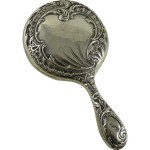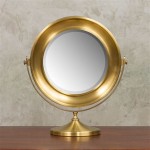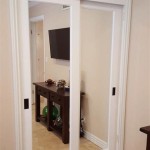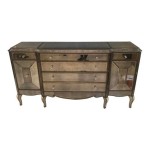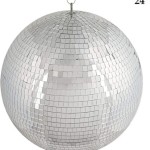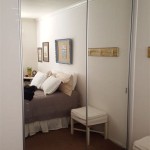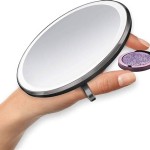How to Make a Mirror
Creating a mirror involves depositing a thin reflective layer onto a suitable substrate. While commercially produced mirrors utilize sophisticated vacuum deposition techniques, simpler methods allow for creating functional mirrors at home, albeit with potentially lower reflectivity and durability. This article will explore the process of making a mirror using readily available materials and relatively simple techniques.
Preparing the Glass
The first step in mirror making involves preparing the glass substrate. A clean, smooth surface is essential for achieving a uniform reflective coating. Any imperfections or contaminants on the glass will translate into flaws in the final mirror.
- Select the glass: Choose a piece of glass with the desired size and shape. Thicker glass is generally preferable for larger mirrors to minimize warping and distortion. Float glass, commonly used in windows, provides a good balance of cost and quality.
- Clean the glass: Thoroughly clean the glass using a glass cleaner and a lint-free cloth. Ensure that all dust, grease, and fingerprints are removed. Rinsing with distilled water after cleaning can help eliminate any residual cleaning agents.
- Dry the glass: Carefully dry the cleaned glass using a lint-free cloth, taking care not to reintroduce any contaminants. Allow the glass to air dry completely in a dust-free environment.
Applying the Reflective Coating
The reflective coating is what transforms the glass into a mirror. Silvering, a traditional method, uses a chemical reaction to deposit a thin layer of silver onto the glass. While other metals can also be used, silver provides a good balance of reflectivity and cost-effectiveness. This process requires careful handling of chemicals.
- Prepare the silvering solution: This typically involves mixing silver nitrate with a reducing agent, such as glucose or formaldehyde, in the presence of ammonia. Precise measurements and careful mixing are crucial for successful silvering.
- Apply the solution: The silvering solution is poured onto the clean glass surface, ensuring complete coverage. The glass should lie horizontally in a level, stable position to achieve a uniform coating thickness.
- Allow the silver to deposit: The chemical reaction between the silver nitrate and the reducing agent causes metallic silver to deposit onto the glass. This process typically takes several minutes to complete.
- Rinse and dry: After the silvering is complete, rinse the mirrored surface gently with distilled water to remove any residual chemicals. Allow the mirror to dry completely in a dust-free environment.
Protecting the Reflective Coating
The freshly deposited silver layer is delicate and susceptible to oxidation and damage. Protecting this layer is crucial for the longevity of the mirror. Applying a protective backing helps shield the silver from environmental factors.
- Apply a protective layer: This can be achieved by applying several coats of a suitable sealant, such as shellac or lacquer, to the back of the silvered glass. This helps prevent oxidation and physical damage to the reflective surface.
- Allow the sealant to dry: Ensure that each coat of sealant is completely dry before applying the next. This typically requires several hours of drying time.
- Optional backing: For added protection and structural support, a backing board, such as plywood or hardboard, can be attached to the back of the mirror using adhesive.
Alternative Methods
While silvering is a common method, other techniques exist for creating reflective surfaces. These alternatives offer varying degrees of reflectivity, durability, and ease of application.
- Spray-on mirror coatings: Commercially available spray paints containing metallic particles can be used to create a mirrored effect. While convenient, these coatings generally offer lower reflectivity and durability compared to silvering.
- Aluminum foil: Applying smooth aluminum foil to a clean glass surface using adhesive can create a basic reflective surface. This method offers limited reflectivity and may exhibit wrinkles or imperfections.
- Mylar film: Specialized reflective Mylar films can be applied to glass or other substrates to create a mirror-like finish. These films offer good reflectivity but may be less durable than traditional silvered mirrors.
Safety Precautions
Working with chemicals and glass requires careful attention to safety. Appropriate precautions should be taken to minimize the risk of accidents and injury.
- Protective gear: Wear appropriate personal protective equipment, including gloves, eye protection, and a respirator, when handling chemicals or spray paints. This helps prevent skin irritation, eye damage, and inhalation of harmful fumes.
- Ventilation: Work in a well-ventilated area to avoid the buildup of fumes from chemicals or solvents. Adequate ventilation helps minimize the risk of inhalation hazards.
- Handling glass: Handle glass carefully to avoid cuts and breakage. Wear gloves to protect hands from sharp edges.
- Disposal: Dispose of chemicals and waste materials properly according to local regulations. This helps protect the environment and prevent potential hazards.

How To Make A Mirror With Pictures Wikihow

How To Make Mirrors By Silvering Glass 8 Steps With Pictures

How To Make A Mirror With Pictures Wikihow

How To Make A Mirror With Pictures Wikihow

How To Make A Mirror With Pictures Wikihow

How To Make A Mirror With Pictures Wikihow

Homemade Mirror Paper How To Make At Home Diy Epaper Sajal S Art

How To Build A Mirror Frame Sunshine And Rainy Days

How To Make A Diy Wood Frame Mirror With Mirrors Tea And Forget Me Nots

Diy Make Up Mirror Vanity Makeup

